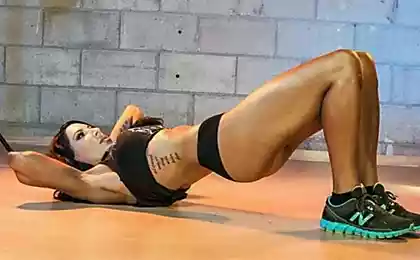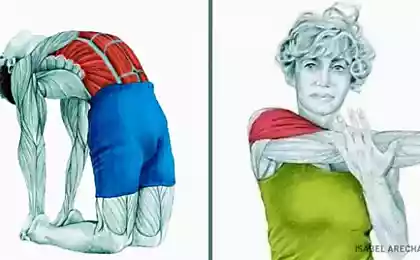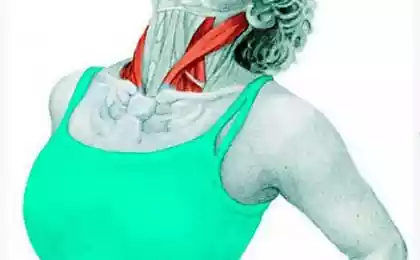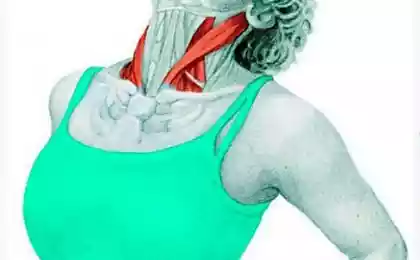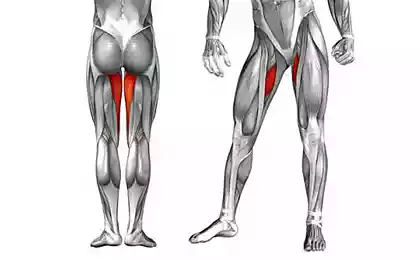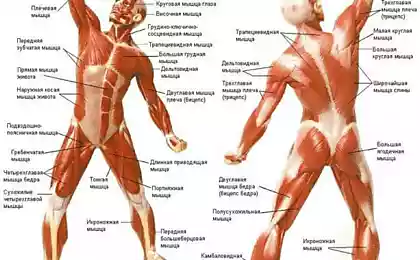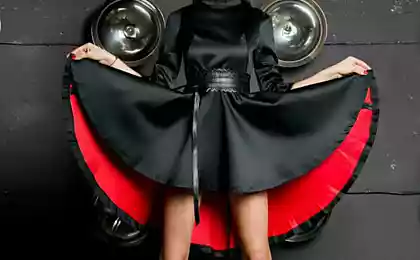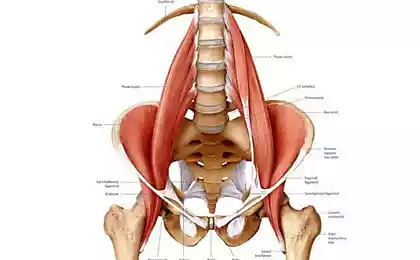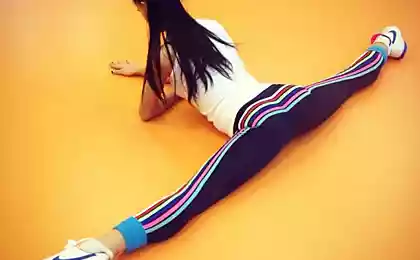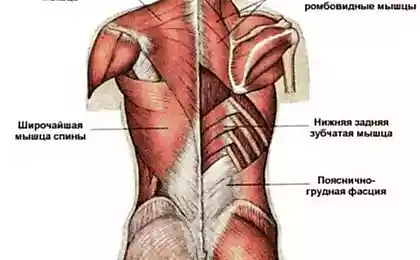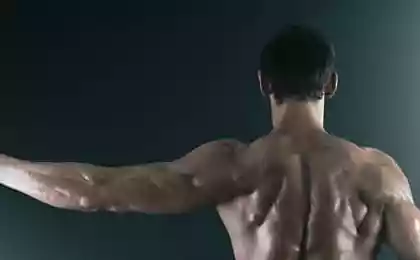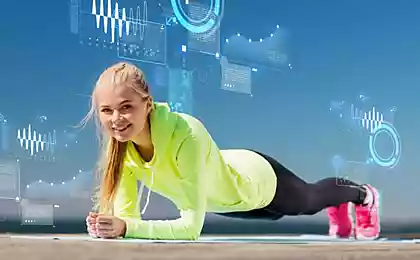458
How to recover weak gluteal muscles: 5 Golden rules
Unfortunately, many of us have weak, sagging buttocks, which are the result of a sedentary lifestyle. Besides being unattractive, weak buttock muscles can cause a number of problems with posture, and cause back pain.
To restore weak muscles, you need to pay special attention to their training. Otherwise, you will remain with full hips and flat buttocks. These 5 rules you restore the strength and mobility of the gluteus Maximus.
Ninety two million three hundred ninety one thousand one hundred five
Add loadIf your program provides only one exercise for the buttocks in a week, add more exercise to back. The buttocks are well adapted to frequency — the more often you train them, the faster they grow and become stronger. Instead of trying to swing the ass once a week, incorporate appropriate movement in every workout.
Try it: Add to your program lunges with weights, gluteal bridge, of hip abduction and hyperextension exercises.
More extension in the hip jointsMobility of the hip joints is of great importance for the stability of the pelvis and everyday movement. Walking, running, standing or sitting — all these movements and positions begin and end with the hips.
In our time, computers and offices of the people spend most of their time in the pose with bent hips (in sitting position). It causes stiffness of quadriceps and lumbar muscles, as well as the weakening of the extensors of the hip, particularly gluteus Maximus.
To get rid of these symptoms and get on the road to recovery strongholds back of the body, it is necessary to regularly engage the muscles responsible for flexion and extension of the hips. Extension occurs when the hips or pelvis move back. The most common and effective exercises for training the extensors — squat and deadlifts. Combine with exercises aimed at a mass in the gluteal muscles.
Try: Use squats and deadlifts as the basis for training the extensors, and add 1-2 accessory exercises, such as, for example, Romanian deadlifts, Romanian deadlift on one leg, gluteal bridge, hyperextension, reverse hyperesthesia or leg swings.
Sixty four million nine hundred thirteen thousand one hundred ninety five
Add diversionYour buttocks are formed by several kinds of movements — not only such important stretching. Your hip joints are also in flexion, rotation in different planes, and abduction. Try rotating the leg from the hip in a circle, and feel what was going on. Along with the extension of the hips, another important move for strengthening the glutes is the diversion leg from the hip to the outside from the middle of your body.
The main "engine" of your hip is gluteus. Its front fibres are the thigh inward, and the rear of the fibre is withdrawn it out. Strong gluteus will control any unwanted lateral movement in the pelvis. For example, if your left leg is falling when you stand on the right leg, probably you have a weak right gluteus. An undeveloped pelvis can lead to other problems such as friction syndrome Iliotibial tract or "runner's knee", or patellofemoral pain syndrome (knee pain), none of which can not be called pleasant.
Try: to strengthen the gluteal muscles, add 2 sets of 10 reps of lead leg while standing in a block training simulator and 2 sets of 12 repetitions of raising legs while sitting with the band twice a week.
Seventy nine million nine hundred six thousand eighty two
Follow the activity of their buttocksIf you constantly sit on them, your buttocks every day will become weaker and weaker. This disadvantage may be exacerbated if the load is redistributed to other muscles that compensate for the inefficiency of the gluteal. Avoid activities in which your buttocks remain passive. Let them load, at least for 10 minutes a day. This regular engagement will help you to make better use of your gluteal muscles during training.
Try it: Perform 10 repetitions each of these exercises once a day:
— gluteal bridge on one leg;
exercise "fire hydrant" — the diversion of the bent leg from a standing position on outstretched arms and knees;
— the Bird Dog exercise — alternate pulling the opposite arms and legs standing on outstretched hands and knees;
— the voltage of the buttocks in the standing position.
Strain
Stress is the best method for muscle growth. It occurs when you passively stretch or compress active muscles. Passive tension is what does your hamstring in the bottom position of a Romanian pull; active — what happens to the biceps when you squeeze the hands to lift the rod. Both play a key role in muscle growth, and can be of great importance in the development of the gluteal muscles.
When you use full range of motion, your muscles are under a combined influence of both types — passive and active tension. For example, at the bottom of the squat, your glutes are fully stretched (passive tension), and in the upper part tense (active compression).
Maintain this tension throughout the movement is the best method of achievement. To do this, control your approach and steady pace, and do not rely. And Yes, stick to full range movements.
Try it: To enhance the mechanical stress, use when you exercise tempo, which is a series of 3 or 4 digits, e.g. 2-2-2. The first number is the number of seconds in the bottom of the movement, the second pause time, and the third is the number of seconds at the top of the movement. The tempo can also look like 2-2 or 3-3 or — with a pause in mid — 3-3-3. But do not forget that the addition of tempo does not negate the full range of motion! published
P. S. And remember, only by changing their consumption — together we change the world! ©
Join us in Facebook , Vkontakte, Odnoklassniki
Source: fitfixed.com
To restore weak muscles, you need to pay special attention to their training. Otherwise, you will remain with full hips and flat buttocks. These 5 rules you restore the strength and mobility of the gluteus Maximus.
Ninety two million three hundred ninety one thousand one hundred five
Add loadIf your program provides only one exercise for the buttocks in a week, add more exercise to back. The buttocks are well adapted to frequency — the more often you train them, the faster they grow and become stronger. Instead of trying to swing the ass once a week, incorporate appropriate movement in every workout.
Try it: Add to your program lunges with weights, gluteal bridge, of hip abduction and hyperextension exercises.
More extension in the hip jointsMobility of the hip joints is of great importance for the stability of the pelvis and everyday movement. Walking, running, standing or sitting — all these movements and positions begin and end with the hips.
In our time, computers and offices of the people spend most of their time in the pose with bent hips (in sitting position). It causes stiffness of quadriceps and lumbar muscles, as well as the weakening of the extensors of the hip, particularly gluteus Maximus.
To get rid of these symptoms and get on the road to recovery strongholds back of the body, it is necessary to regularly engage the muscles responsible for flexion and extension of the hips. Extension occurs when the hips or pelvis move back. The most common and effective exercises for training the extensors — squat and deadlifts. Combine with exercises aimed at a mass in the gluteal muscles.
Try: Use squats and deadlifts as the basis for training the extensors, and add 1-2 accessory exercises, such as, for example, Romanian deadlifts, Romanian deadlift on one leg, gluteal bridge, hyperextension, reverse hyperesthesia or leg swings.
Sixty four million nine hundred thirteen thousand one hundred ninety five
Add diversionYour buttocks are formed by several kinds of movements — not only such important stretching. Your hip joints are also in flexion, rotation in different planes, and abduction. Try rotating the leg from the hip in a circle, and feel what was going on. Along with the extension of the hips, another important move for strengthening the glutes is the diversion leg from the hip to the outside from the middle of your body.
The main "engine" of your hip is gluteus. Its front fibres are the thigh inward, and the rear of the fibre is withdrawn it out. Strong gluteus will control any unwanted lateral movement in the pelvis. For example, if your left leg is falling when you stand on the right leg, probably you have a weak right gluteus. An undeveloped pelvis can lead to other problems such as friction syndrome Iliotibial tract or "runner's knee", or patellofemoral pain syndrome (knee pain), none of which can not be called pleasant.
Try: to strengthen the gluteal muscles, add 2 sets of 10 reps of lead leg while standing in a block training simulator and 2 sets of 12 repetitions of raising legs while sitting with the band twice a week.
Seventy nine million nine hundred six thousand eighty two
Follow the activity of their buttocksIf you constantly sit on them, your buttocks every day will become weaker and weaker. This disadvantage may be exacerbated if the load is redistributed to other muscles that compensate for the inefficiency of the gluteal. Avoid activities in which your buttocks remain passive. Let them load, at least for 10 minutes a day. This regular engagement will help you to make better use of your gluteal muscles during training.
Try it: Perform 10 repetitions each of these exercises once a day:
— gluteal bridge on one leg;
exercise "fire hydrant" — the diversion of the bent leg from a standing position on outstretched arms and knees;
— the Bird Dog exercise — alternate pulling the opposite arms and legs standing on outstretched hands and knees;
— the voltage of the buttocks in the standing position.
Strain
Stress is the best method for muscle growth. It occurs when you passively stretch or compress active muscles. Passive tension is what does your hamstring in the bottom position of a Romanian pull; active — what happens to the biceps when you squeeze the hands to lift the rod. Both play a key role in muscle growth, and can be of great importance in the development of the gluteal muscles.
When you use full range of motion, your muscles are under a combined influence of both types — passive and active tension. For example, at the bottom of the squat, your glutes are fully stretched (passive tension), and in the upper part tense (active compression).
Maintain this tension throughout the movement is the best method of achievement. To do this, control your approach and steady pace, and do not rely. And Yes, stick to full range movements.
Try it: To enhance the mechanical stress, use when you exercise tempo, which is a series of 3 or 4 digits, e.g. 2-2-2. The first number is the number of seconds in the bottom of the movement, the second pause time, and the third is the number of seconds at the top of the movement. The tempo can also look like 2-2 or 3-3 or — with a pause in mid — 3-3-3. But do not forget that the addition of tempo does not negate the full range of motion! published
P. S. And remember, only by changing their consumption — together we change the world! ©
Join us in Facebook , Vkontakte, Odnoklassniki
Source: fitfixed.com
Healthy sweets: Recipes surprisingly gentle pastes from apples
Premiere of Toyota in Tokyo: sports car, vodorodnoi and unusual hybrid

